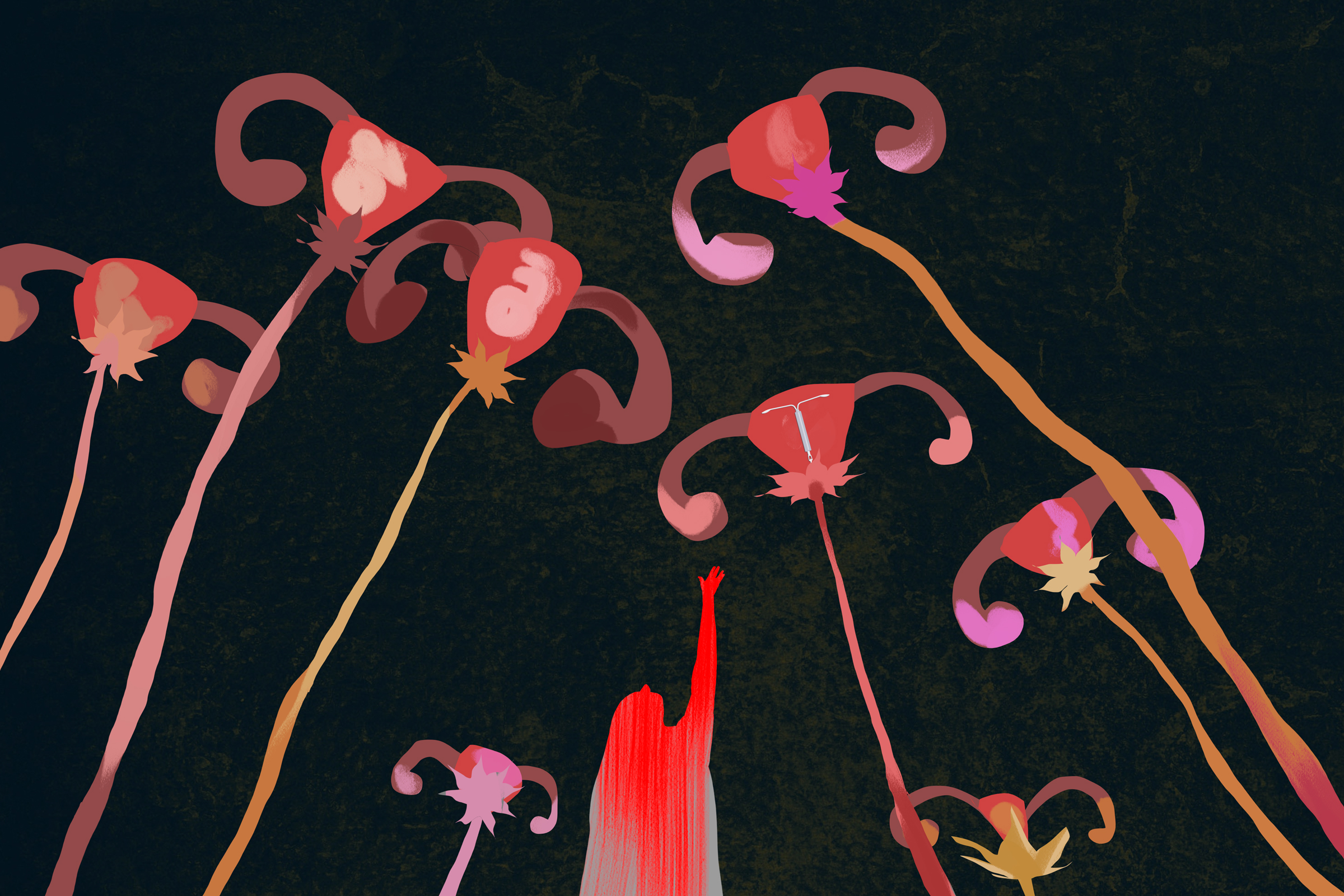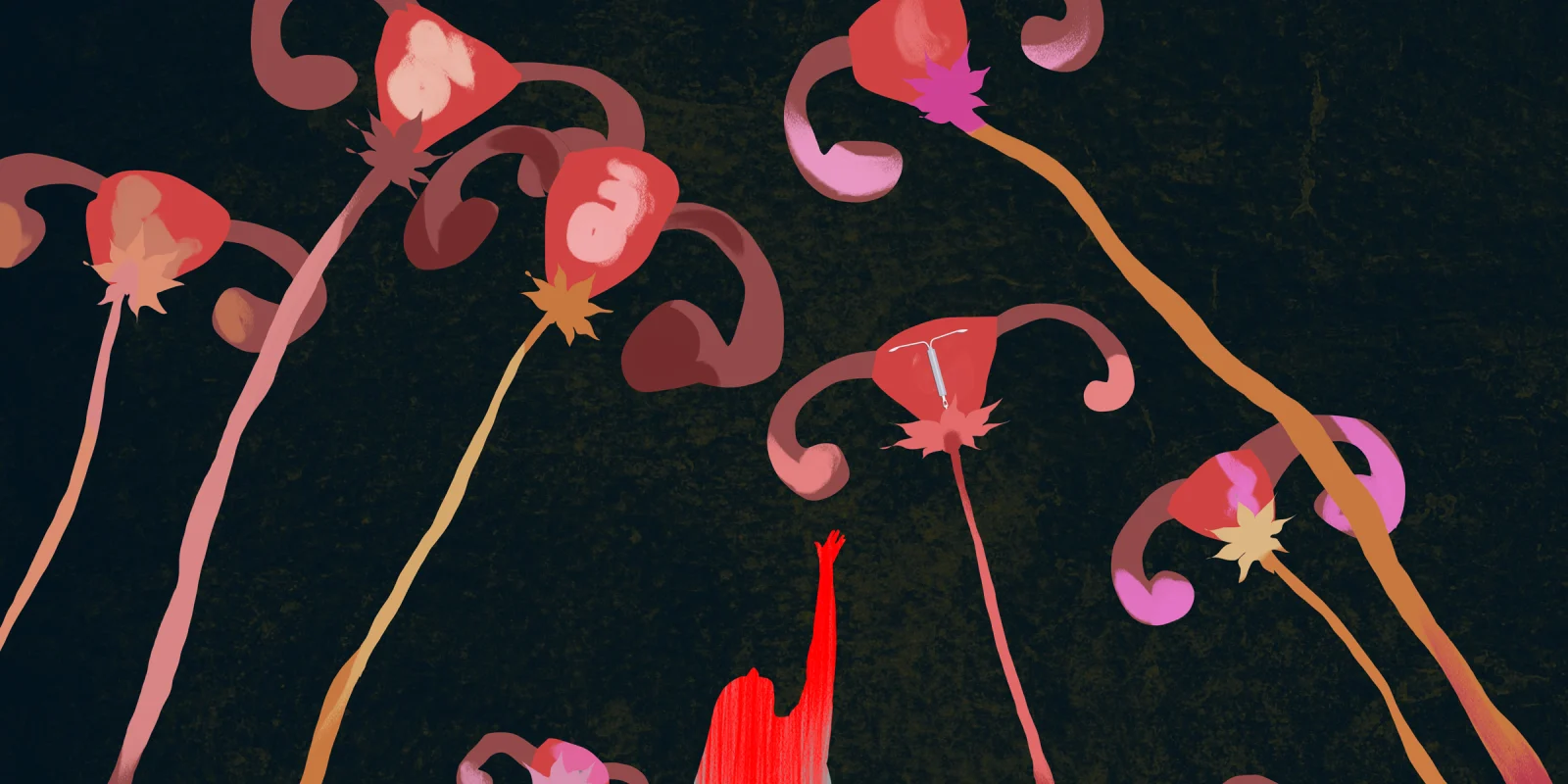 This is part of the Medical Humanities Series on Op-Med, which showcases creative work by our members. Do you have a poem, short story, creative nonfiction or visual art piece related to medicine that you’d like to share with the community? Send it to us here.
This is part of the Medical Humanities Series on Op-Med, which showcases creative work by our members. Do you have a poem, short story, creative nonfiction or visual art piece related to medicine that you’d like to share with the community? Send it to us here.
Lying on her back with her legs flexed at the hips,
Knees splayed,
Feet hitched,
Diopter dangling from her vaginal introitus.
Is this what it’s like to be pilloried?
Inside, the duck-bill blades lift the vaginal walls
Exposing the womb
The tenaculum’s teeth sink into her fleshy pink cervix,
Click-click-click,
Forming two depressions
In reflex, she arches her back,
Hands clenching the sides of the bed
Moaning—
Muttering obscenities—
a supplication for the pain to cease.
I watched this sequence happen twice more.
Once, when a malleable probe squeezed through her canal,
Relentless,
a Titanic between icebergs.
And again, when the doctor lodged the intra-uterine device.
Retracting the inserter, glistening with blood and mucous,
she lowered her body
—one vertebra at a time.
Outside, a student bursts into tears,
Washing away the fear frozen on her face.
I saw the virgin in her eyes
Disappear
What inspired this piece?
My attending and I were preparing to place an IUD in a patient, and I was eager to teach the medical student. When the patient cried out in agony as the instruments manipulated and penetrated her cervix, the student became extremely disturbed. When she left the room, the student began weeping due to the traumatic nature of the procedure. It made me realize that some of the things we physically do to our patients can seem cruel, especially to the untrained eye. When performing sensitive or unpleasant exams and procedures, I take extra care to minimize pain and make the patient, and student, as comfortable as possible.
Why did you choose this form?
Poetry makes the story come to life. I wanted to provide imagery so the reader can not only visualize the incident, but essentially be present next to the patient. I jump from different perspectives — the patient, provider, and student. The stanzas are strategically chosen to break the procedure into steps.
How long have you been doing this activity? How did you get into it? How does it relate to your medical practice?
I picked up writing in medical school because it was a cathartic exercise. It allowed me to reflect on really difficult experiences, especially if one of my patients was really ill. When residency is really tough and I feel defeated, writing is therapeutic and reminds me of the real reason I pursued medicine, to care for patients.
Chrissy is an obstetrics and gynecology resident at SUNY Downstate Medical Center in Brooklyn. She is a graduate of the Medical College of Wisconsin and studied Healthcare Markets and Finance at the University of Pennsylvania. In her free time, she enjoys running, biking, cooking, and exploring Brooklyn.
Illustration by Jennifer Bogartz







